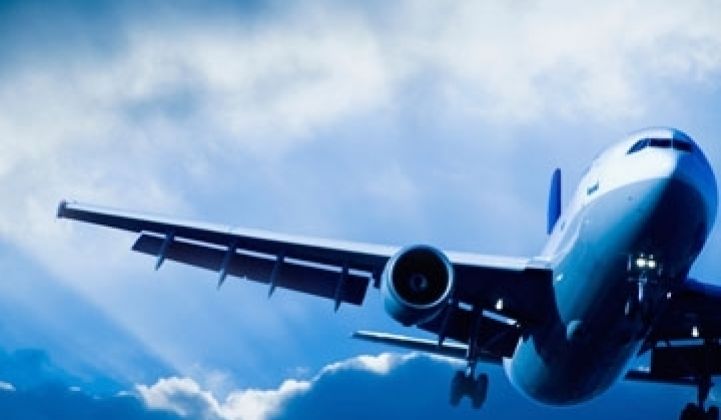General Electric will double down on the environment.
The sprawling conglomerate will spend $10 billion on research and development for products for the ecomagination group over the next five years, doubling the $5 billion spent in the inaugural five years of the program.
GE has also identified areas that will potentially allow it to cut $150 million per year out of its operating costs while reducing its environmental footprint.
"We will double everything that we did," said Steve Fludder, the vice president of ecomagination at GE. "With the $5 billion investment in R&D, we sold $70 billion worth of eco-certified products."
Revenue in the dismal economic year of 2009 alone came to $18 billion, a six-percent increase over the year before.
So where will GE concentrate next? While it will continue to invest in things like energy-efficient turbines, green locomotives, and sodium batteries, the company will increasingly focus on bringing more intelligence and networking to existing product categories. The company, for instance, will roll out software applications for better organizing flight paths, take-offs, and landings for airplanes to reduce the time that planes have to spend circling airports and cut fuel consumption.
"It is a cost savings to the airlines and it is a huge comfort factor for customers," said Fludder. "These are the kind of IT-enabled solutions we will invest in."
GE is one of the world's largest manufacturers of aircraft engine and equipment. "Engines to aviation -- We know that industry," he added.
The application is likely based largely on technology from Naverus, a startup bought by GE last November. (Foundation Capital invested in Naverus, marking another success for that firm in green.)
Similarly, GE is developing software to orchestrate arrivals and departures for locomotives. Ideally, the software will also allow trains to slow down or speed up to prevent congestion and optimize delivery. The company has also been working on bringing intelligence to household appliances. (GE exec John McDonald now heads up the effort to pass national smart grid standards at the National Institute for Science and Technology.)
Equipment, though, won't be completely ignored. Following the growth of its onshore wind turbine business, GE will put significant investments into the development of offshore turbines.
The ecomagination group almost functions like a "best of" group within GE. Jet engines, wind turbines and other various products are selected and branded as ecomagination products if they provide significant environmental and economic benefits. (Certification for the program is conducted by a third-party company.) The company then totals up the revenue from those profits on an annual basis to see how its environmental push is doing. The group also has a $175 VC fund.
Fludder also noted that during the first five years of the program, GE managed to reduce its greenhouse gas emissions by 22 percent. Half of the reduction came as a result of the economic climate. The other half came from improvements in GE's operations.
While the company is pleased overall with the results of the first five years, some product categories have not performed as well as expected. GE has made several investments and acquisitions in water. However, the industry remains somewhat homogeneous.
"Everyone is pretty much doing the same thing the same way" when it comes to water treatment, Fludder said. "I like water, but I think it could be a bigger and more differentiated business."



